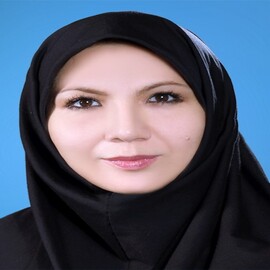Agenda
Conference Schedule
Day 1 full schedule
February 07, 2022 @ 13:00 - 17:10

Ahmed Emad EL masry
Faculty of NursingUniversity of kafr El-shiekh
Egypt
ABSTRACT
Nurses play an integral role in the healthcare field, providing care to patients and filling leadership roles at hospitals, health systems, and other organizations. However, being a nurse is associated with big challenges. Although nursing has a wide scope, the demand for this profession is decreasing as nurses do not get appropriate financial compensation and respect according to their duties, which are much more difficult as compared with doctors and physicians. They constantly deal with patients and spend unbearable long hours but are still not compensated as much as they deserve. The compensation and respect that nurses get related to the responsibilities of the job should be increased. Another challenge that nurses face is the violent behavior of patients in the hospital. Many patients are difficult to communicate with and can be violent at times. This is why this profession is highly demanding and stressful at times. Most of the time, patients and other health staff are the major sources of violence against nurses. The shortage of nurses is a worldwide problem. Nowadays, with the increase in health services costs, hospitals are facing a crisis in managing the shortage of nursing staff. This is because hospitals are investing more in advanced medical technologies than focusing on maintaining proper staff. Everybody gets stressed out sometimes, but over a longer period, it can become a burnout, in other words, emotional exhaustion and disengagement. As nurses are responsible for the care of the patients, they are always at risk of acquiring diseases that these patients have. Many times, even the healthiest of nurses may acquire these illnesses. The nurses must take care of themselves by fortifying themselves with the proper vitamins/nutrition, keeping up to date with their vaccinations, and staying physically fit.
Health Literacy and Concerns Among Nursing Staffs towards the COVID-19 Vaccination and the Associated Mucormycosis: A QuasiExperimental Study

Amal I. Khalil
ProfessorMenoufyia University
Egypt
ABSTRACT
.

Mohammad Namazi Nia
FacultyTorbat Heydariyeh University of Medical Sciences
Iran
ABSTRACT
It is generally accepted thatcancer affects the concept of mental well-being by changing the physical, psychological, spiritual, and social dimensions of the patient's life. Laughter yoga as one of the complementary therapies may promote mental well-being in patients undergoing chemotherapy. Aim: This study aimed to determine the effect of laughter yoga on the mental well-being of cancer patients undergoing chemotherapy. Method: This randomized controlled trial was conducted on 69 cancer patients undergoing chemotherapy at Reza Medical Center, Mashhad, Iran, in 2018. The intervention group was subjected to four 20-30 min sessions of laughter yoga prior to chemotherapy. On the other hand, the control group received routine self-care training. The mental well-being scores were measured using the Warwick-Edinburgh Mental Well-being Scale (WEMWBS) before and after the laughter yoga sessions. Data were analyzed in SPSS software (version 20) using an independent t-test, Mann-Whitney test, Wilcoxon test, and repeated measures ANOVA. Results: According to the results,the mean age values of the patients were 49.0±9.6 and 45.2±12.6 years in the intervention and control groups, respectively. Regarding the independent t-test results, the mean post-test WEMWBS score in the intervention group (50.0±8.9) was significantly higher than that in the control group (47.9±10.4, P=0.004). Moreover, the repeated measures ANOVA showed a significant increase in the mean post-test WEMWBS score in the intervention group (P<0.001).Conclusion: Laughter yoga can promote the mental well-being of patients undergoing chemotherapy; therefore, its clinical applications are recommended in this study.
Teacher's Knowledge and Attitudes Toward the Use of Assistive Technology for Disabled Children Management: Impact of An Educational Interventions

Neama Yousef Mohamed Hantira
Faculty of NursingAlexandria University
Egypt
ABSTRACT
Background: A variety of ways could be used to promote learning of disabled children such as further training to the caregivers or teachers on the use of technology or assistive devices. The current study aimed to investigate the effectiveness of an educational intervention on improving teachers' knowledge and attitudes toward the use of assistive technology for disabled children in their working settings. Methods: A quasi-experimental research design was applied with 68 purposive samples of teachers selected conveniently from Badghish rehabilitation center, Disabled children's association institution, and Jeddah rehabilitation center, located at Jeddah, Saudi Arabia. Three tools were used including demographic and personal information of the participants, Knowledge, and Attitudes Questionnaires adapted from (Alkahtani, 2013) and Ledger, (1999) and the final tool was developed by the researchers based on the related review of the literature, validity, and reliability of the tools were confirmed and Cronbach alpha was reported to be 0.88. Results: All teachers were female, (69.1%) less than 30 years old, 42.6% were married and the majority (91.2%) have bachelor's degrees. 31% indicated the unavailability because of high cost followed by 22% indicted the child-related disabilities and 19 % were in lack of trained teachers. Additionally, a highly significant difference was reported between pre and post-test among studied teachers' according to their total knowledge in pre-assessment (66.1±11.4) compared with (72.9±12.0) in post-test and attitude in pre (77.9±11.2) compared with post total score (86.4±11.2) regarding the usage of assistive technology at p-value < 0.05. Conclusion and Recommendations: the obtained results concluded that the program is effective in developing knowledge and attitudes of the participants with a highly statistically significant difference between the total mean of their knowledge, total attitude, teacher responsibility, teacher support, total perspectives, and program evaluation among studied teachers at p < 0.05. Therefore, a well-planned and structured educational program should be undertaken to improve the level of awareness and contribute to better practice toward the use of Assistive Technology for disabled children management.
Development a Geriatric Nursing-Specific Mini-CEX in Simulation Comprehensive Geriatric Assessment for Evaluation Professional Competency among Internship Nursing Students

Samira Mohajer
Geriatric lecturer & researcherMashad University of Medical Sciences
Iran
ABSTRACT
Professional competence in geriatric care is referred to as a set of attitudes, knowledge, and skills that are used by nurses in the clinical nursing process of geriatric patients. Competent nursing students must be optimally equipped through implementing Comprehensive Geriatric Assessment (CGA) to meet the unique needs of older adults particularly among non-geriatric nursing students that are not familiar with this invaluable assessment. The use of standardized patients (SPs) as a simulation method in the evaluation of students has gained support. Hence, the development of a Geriatric Nursing-Specific Mini-CEX in Simulation CGA to evaluate nursing students' professional geriatric competencies (PGC) before entering to internship professional practice is of great importance. So, this study is crucial to fill data scarcity. The aim of the study was conducted to development of a geriatric nursing-specific Mini-Clinical Evaluation Exercise (Mini-CEX) tool and evaluation of the professional geriatric competencies through performing a simulation of Assessment CGA among Iranian internship nursing students. We designed a descriptive observational quantitative method with a cross-sectional design in four phase-study. A new competence measurement instrument was developed based on the geriatric core competencies of internship nursing students. When the opinion of the expert’s evaluation was confirmed through the Delphi method, the reliability test was done by Cronbach alpha test. The ten Standard Patients (SPs) were recruited and trained. Each training session lasted approximately four hours. A feedback guide was designed concerning the SPs’ tasks, responsibilities, and scenarios were practiced accordingly, and their performance was standardized. Then, the study included 160 internship undergraduate nursing students selected by convenience sampling in the seventh semester in January 2020, at Mashhad University of Medical Sciences (MUMS), Iran. The students’ professional competencies of geriatric skills were evaluated through implementing a simulation of CGA. Each student performed the actions they were assigned for 15 minutes and was simultaneously evaluated by the trained evaluator using the Geriatric Nursing-Specific Mini-CEX. Our results showed the ICC values for seven components of geriatric nursing-specific Mini-CEX were ranged between 0.639 to 0.919, indicating the acceptable level of reliability for this tool. The mean score for the overall geriatric competency was (M= 6.12, SD=.33), which indicated that the geriatric competence of students enrolled in the study was at a moderately satisfactory level. The highest and the lowest mean score was observed in history taking /communication (M= 6.71, SD=.71) and physical examination skill (M= 4.99, SD=.67), respectively. The results of this research indicate the feasibility of using the newly developed geriatric nursing-specific Mini-CEX tool in the Simulation of CGA to evaluate the core geriatric competencies of Iranian nursing students. The study supports the application of the Mini-CEX tool to assess professional geriatric competence through implementing a simulation of CGA among internship nursing students before entering professional clinical settings. Its data could be useful for educators to redesign curriculum as a process of quality improvement.

Serife Cinar
Research AssistantIstanbul Medipol University
Turkey
ABSTRACT
.

Nelson Bautista
Clinical Nurse EducatorTawam Hospital
UAE
ABSTRACT
PROBLEM STATEMENT/INTRODUCTION
As the largest subset of health care workers, nurses are critical to a hospital’s healthcare system. Nurses protect, promote, and optimize the health of their patients by preventing illness and injury, facilitating healing, and alleviating suffering. Nurses are role models, educators, and advocates. Therefore, the wellbeing of nurses is fundamental to the health of our hospital, and should be a focus of an organization’s wellbeing initiatives.In the previous years, nurses just try to overcome the work stress and challenges on their own, without meaningful support from the organization. There were activities here and there, but without proper needs assessment, reporting and analysis of outcomes. Especially in these challenging times, there is a greater need to support nurse wellbeing, but it needs to be done in a way where the activities are implemented according to their type of work, schedules and unit acuity.
METHODOLOGY
The SEHA Nursing Staff Health and Wellbeing Subcommittee adopted an initiative dubbed “Your Health First,” a program designed to improve the health and wellbeing of nurses. The initiative focuses mainly on nurses and aims to broadly connect and engage individual nurses to take action and take responsibility for their own health within the five domains: activity, sleep, nutrition, quality of life, and safety. The initiative also provides a platform to inspire action, cultivate friendly competition, provide content and resources to nurses, gather data, and connect nurses who want to look after their health in general.The initiative is based from the American Nurses Association (ANA)’s wellbeing program – Healthy Nurse, Healthy Nation (HNHN) Movement, which is an online platform in the US, for nurse wellbeing challenges. The team partnered with HNHN so we can utilize their evidence-based resources such as the online health survey, wellbeing calendars and wellbeing articles. We have modified their program though, in terms of implementation. In the US, the HNHN Movement is merely an online platform and nurses are encouraged to participate by doing the monthly activities on their own. With our implementation, we utilized strategies to ensure participation is enhanced. Wellbeing champions were identified as ambassadors for wellbeing. And because the implementation is unit-based, we ensure that the wellbeing activities get more personal, meaningful and relatable. This translates to creating more impact to staff health and wellbeing.
RESULTS
The initiative has been adopted by the health care facilities under Abu Dhabi Health Care Company (SEHA) since 2019. Nurses enjoy this program as it is one of the few programs that focuses on nurse health and wellbeing. Monthly reports are generated by nursing units where Wellbeing Champions can analyze feedbacks from the nurses and adjust activities as required. Feedback reports indicate improved morale, better teamwork and social networks, increased productivity, reduced absenteeism, higher job satisfaction, and stronger engagement. On top of the feedback reports, facilities use other tools to measure staff wellbeing, including the National Database for Nursing Quality Indicators (NDNQI) and the Healthy Nurse Healthy Nation (HNHN) Health Surveys.
CONCLUSIONS
It is very timely and clearly shows that the stress of work leads to long term and widespread health problems and burnout among nurses. While this wellbeing initiative was started before the COVID-19 pandemic, the situation further highlighted how essential it is for nurses to have supportive work environments. It is really important that nursing leaders and workforce planners take into consideration nursing wellbeing seriously, whilst looking at better patient outcomes.

David John Wortley
Vice PresidentInternational Society for Digital Medicine
United Kingdom
ABSTRACT
Rapidly maturing disruptive technologies are changing the face of Nursing and Healthcare. COVID-19 has helped to accelerate the role of technology in how we manage public health. The early origins of telemedicine were based on providing tools to help clinicians remotely diagnose and treat patients, primarily by providing an alternative to face-to-face contact between clinician and patient. The coronavirus situation has made tele-consultations more of a routine practice but advances in other digital technologies such as sensors and virtual reality are likely to have an even bigger transformational effect on the future of healthcare.
Wearable devices with medical grade sensors make it possible not only for doctors and nurses to provide remote care outside of the hospital environment, but also for the technologies themselves to play a very important role in preventative healthcare and personal health management. This presentation takes a look at some key disruptive digital technologies which go beyond traditional telemedicine and provide not only diagnostic tools but also therapies and preventative healthcare interventions for both physical and mental health conditions.



